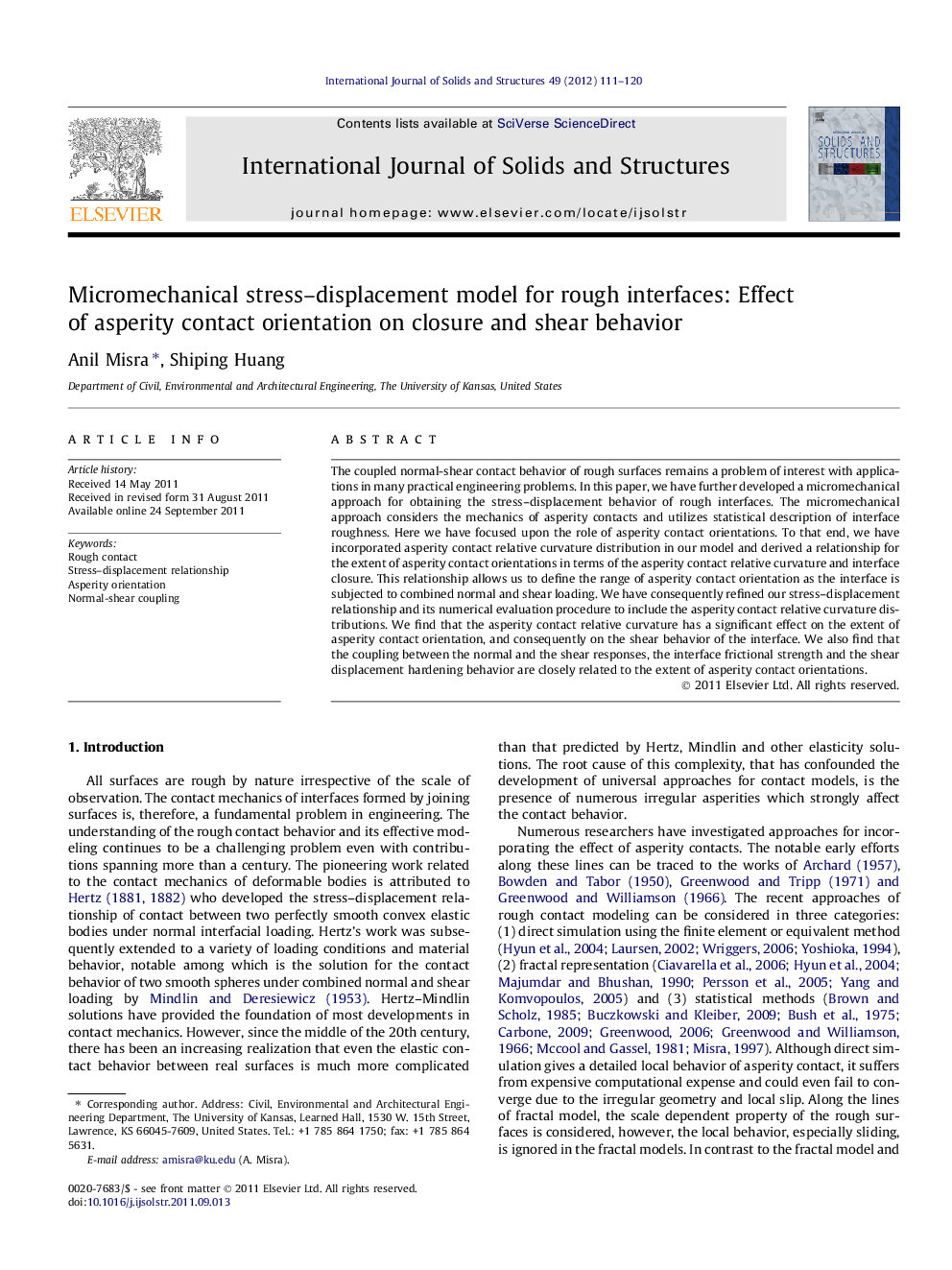| Article ID | Journal | Published Year | Pages | File Type |
|---|---|---|---|---|
| 278257 | International Journal of Solids and Structures | 2012 | 10 Pages |
The coupled normal-shear contact behavior of rough surfaces remains a problem of interest with applications in many practical engineering problems. In this paper, we have further developed a micromechanical approach for obtaining the stress–displacement behavior of rough interfaces. The micromechanical approach considers the mechanics of asperity contacts and utilizes statistical description of interface roughness. Here we have focused upon the role of asperity contact orientations. To that end, we have incorporated asperity contact relative curvature distribution in our model and derived a relationship for the extent of asperity contact orientations in terms of the asperity contact relative curvature and interface closure. This relationship allows us to define the range of asperity contact orientation as the interface is subjected to combined normal and shear loading. We have consequently refined our stress–displacement relationship and its numerical evaluation procedure to include the asperity contact relative curvature distributions. We find that the asperity contact relative curvature has a significant effect on the extent of asperity contact orientation, and consequently on the shear behavior of the interface. We also find that the coupling between the normal and the shear responses, the interface frictional strength and the shear displacement hardening behavior are closely related to the extent of asperity contact orientations.
